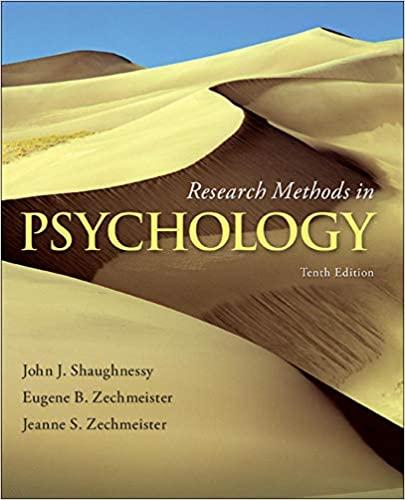A case study showing how mud therapy was successful in treating an individual exhibiting excessive anxiety was
Question:
A case study showing how “mud therapy” was successful in treating an individual exhibiting excessive anxiety was reported in a popular magazine. The patient’s symptoms included trouble sleeping, loss of appetite, extreme nervousness when in groups of people, and general feelings of arousal that led the individual always to feel “on edge” and fearful. The California therapist who administered the mud therapy was known for this treatment, having appeared on several TV talk shows. He fi rst taught the patient a deep relaxation technique and a “secret word” to repeat over and over in order to block out all disturbing thoughts.
Then the patient was asked to lie submerged for 2 hours each day in a special wooden “calm tub”
fi lled with mud. During this time the patient was to practice the relaxation exercises and to concentrate on repeating the secret word whenever the least bit of anxiety was experienced. The therapy was very costly, but after 6 weeks the patient reported to the therapist that he no longer had the same feelings of anxiety that he reported previously. The therapist pronounced him cured and attributed the success of the treatment to immersion in the calming mud. The conclusion drawn by the author of the magazine article describing this therapy was that “it is a treatment that many people could benefi t from.”
On the basis of your knowledge of the limitations of the case study method, answer the following questions:
A. What possible sources of bias were there in the study?
B. What alternative explanations can you suggest for the successful treatment?
C. What potential problem arises from studying only one individual?
Step by Step Answer:

Research Methods In Psychology
ISBN: 9780077825362
10th Edition
Authors: John Shaughnessy, Eugene Zechmeister, Jeanne Zechmeister





